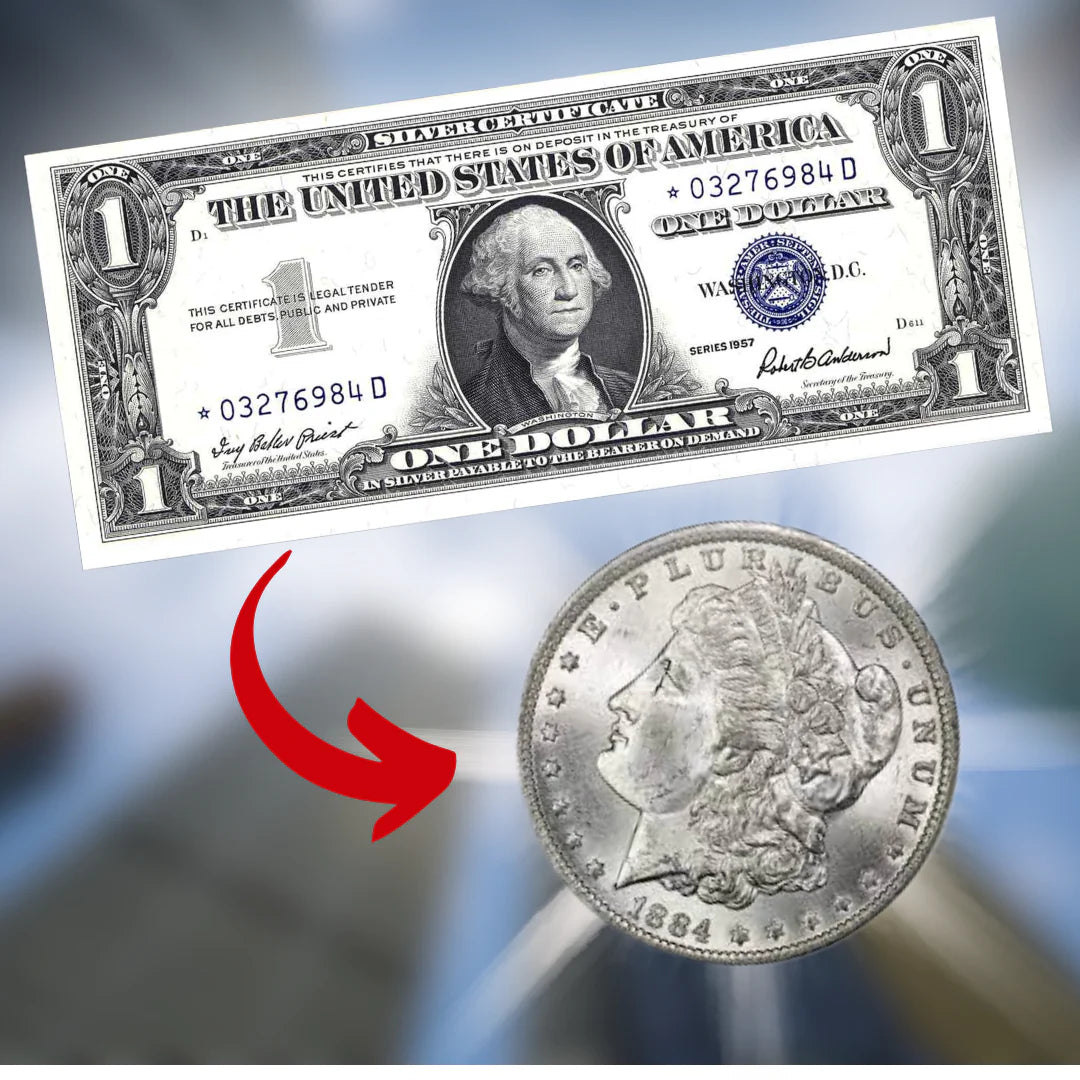Tyler Robinson - September 26th, 2022
Gold and Silver: Handling and Storing Procedures

How should pure Gold and Silver coins, bars and rounds be handled?
Let’s explore proper handling and storing procedures for your investment.
Precious Metals are quickly becoming one of the most popular options for investing. This popularity and internet virality is bringing many new collectors, stackers and investors alike to our industry. This article is meant to outline handling, storing and security measures one must consider when buying gold and silver bullion.
What options are there when buying bullion?
Gold and silver come in many different forms and purities. The most common forms they may take shape in are coins, bars and rounds. Coins are officially backed coinage from one of many governments from around the world.
Bars are the economical choice used when buying large weights of gold and silver and are popular for large investment portfolios and used in the various industries that use precious metals. Rounds and popular replicas (of old coin designs) are non-monetary pure gold and silver manufactured by private mints from around the world.

A picture of a 5 troy ounce .999 Fine Silver Bar produced by the Golden State Mint. Commonly found in our Big Bar Crates which is a monthly Silver Bar subscription. Photo Cred: Investor Crate Facility WEST.
A brief explanation of purities
Most of the time, investors will purchase items manufactured at a .999% or higher purity. However, some government minted coins come in a lower precious metal purity that is carefully mixed with other base metals to form an alloy. The reason manufacturers do this is because gold and silver in its purest form is highly malleable and in the event these coins ever go into circulation, will become damaged very quickly.
An alloy form of a metal adds unique property and the aim of government mints is to make the product as durable as possible for handling. These items are still very much an investment or a collector item and are few in number.
Below is a list of bullion coins with a lower than perfect purity;
- The American Gold Eagle is one of the most popular gold coins in the world as an investment. The Gold content is 1 troy ounce and is 91.67% gold (22 karat) pure. The other metals used to form the durable alloy is 3% silver, and 5.33% copper.
- The South African Gold Krugerrand has been produced since 1967 and over 50 million ounces of Krugerrands in various sizes have been minted. The Gold content by weight is 1 troy ounce and is comprised of 91.7% gold and 8.3% copper. This gives the coin its unique reddish gold hue.
- Applicable to Mexican Mint gold coins minted prior to 1991 known as Type 1 variants weighed a total of 1.2 troy ounces (37.5 grams) and a contained .900 or 90% gold and 10% copper. These coins are particularly cool because they are small in diameter but “chunky” in thickness, which is unique to type 1 Libertad’s.
- Gold Sovereign Coins & Old-World Gold Coins - Due to gold coins being used as an international unit of trade and the heavy circulation they endured, coins made prior to the 1930’s from around the world had purities in the range of .900 and .917 and were an alloy mix with silver or a base metal like copper. For example, pre-1933 U.S. gold coins, Great Britain, and its territories “sovereign gold coins” or the Italian 10 and 20 Lire coins among others.
- There are other coins but most modern coins minus the American Gold Eagle and Gold Krugerrands are now minted in .999 fineness or higher.
Pure Gold and Silver susceptibilities
Gold in its purest form has a unique chemical property that allows it to be very malleable. Because of this, gold coins, bars and rounds of .999+ purity are susceptible to dings, scratches and bending if not careful. To combat this, many collectors and investors buy a variety of storage options that are available.
A few of the most popular options are tubes which are what rolls of the coins come in directly from the mint. There are also a variety of different brands that can offer a tighter fit and more airtight enclosure, including a large variety of different sizes that will meet any coin’s manufacturer specification.
Another option is acrylic coin capsules which is a storage option for a single coin. Some versions of coin tubes come in a large enough diameter to store coins with the added diameter of the capsule, inside of them. This ensures double protection and is the safest method for coin storage.
Silver in its purest form is more durable than gold, however unlike gold, it’s susceptible to tarnishing, discoloration from oxidation and the infamous milk spots. Tarnishing occurs very easily with pure silver and there are a few chemical reactions that can happen. The most common way silver will tarnish is if the bullion encounters water, high heat, or a combination of hot and humid air. This can slowly turn silver into a grey or even blackish color.
Toning is another reaction that can occur with pure Silver is when it comes into contact with Hydrogen Sulfide which is normally present in the atmosphere in minute amounts. Sulfur is also used in the manufacturing process of things like rubber gloves, rubber bands and other rubber products that could be used to store or handle bullion. Some collectors purposely purchase toned coins and bars or put their personally owned silver through a toning process.
Milk spots are something that is combated in the annealing process during refinement by refineries or mints that control this process. Milk spots can show up as tiny white spots on the obverse and reverse sides of bullion. The spots themselves are impurities rising to the surface of the bullion item and are sometimes present because it is impossible for humans to refine a metal to 100% purity at this time in history.
It is important to note that most investors realize that the weight of the actual precious metal item is what truly matters and besides the aesthetics of a coin being effected the value of the metal and investment remains the same. This is unless you are purchasing proof or graded items as a numismatic investment.

A variety of pure gold options within their proprietary packaging. The bars are shown in tamper proof, serialized "assayer cards," and the coins and rounds are in capsules. It is better to leave the product within these to avoid bending, denting and scratching. Photo Cred: Investor Crate Facility WEST.
Proper Handling and Storage
Here is a list of the do’s and don’ts of bullion handling and storage.
- Do not needlessly handle your bullion.
- Do not handle your bullion without wearing 100% cotton gloves to prevent the transfer of naturally produced oils or foreign debris from touching the pure metal.
- Always store your 100% cotton gloves in an area that is free from debris and moisture.
- Never expose your bullion to chemicals, rubber, water or debris.
- Never remove any item from its original mint packaging such as the official mint coin tube, assayer card, capsule or presentation case.
- Always store your investments in a secure safe, vault or hide them.
- Always use things like dehumidifiers and silica beads to absorb and mitigate the chance for humidity and moisture.
- Always purchase acrylic enclosures such as coin capsules, coin and bar tubes and coin flips with each individual bullion purchase.
Many of these coins are highly collectible. Some, like the American Eagle, feature artwork by notable artists. Individual coins may come in a variety of different sizes.
For any questions in regard to storage and handling procedures or precious metals in general, feel free to reach out to our customer success team. We have U.S. based support personnel on duty 24/7, 365. Thank you for choosing the most trusted name in precious metals.
This is in no way to be considered investment advice. Past performance is no guarantee of future results. Asset allocation and diversification do not ensure a profit or guarantee against a loss. Keep in mind that any form of investing involves risk and you should always consult with your financial advisor before making any financial decisions. Investor Crate, LLC., it's subsidiaries and staff will never advise you on any asset as our aim is to provide a fun and affordable service should you decide to purchase Precious Metals.
Keep in mind that investing involves risk. The value of your investment will fluctuate over time, and you may gain or lose money.



